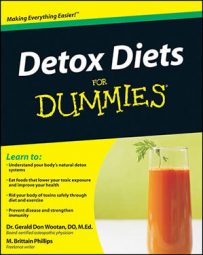In total, food companies add 2,800 substances to their products in an effort to save a buck, boost sales, and ensure that their food will last on the store shelves for a very long time. Many of the toxins that are intentionally added to processed foods are dangerous or detrimental to consumers' health.
Here's a snapshot of what you may find in your food:
Aspartame: One of the more toxic substances we are exposed to nearly every day, aspartame is a blend of toxic chemicals that’s used as a sugar substitute in processed foods. You can find it in everything from diet soft drinks to chewing gum. It took the U.S Food and Drug Administration (FDA) 16 years to approve aspartame, and now millions of pounds of it are added to our food each year.
Aspartame can act as an excitotoxin — a chemical that causes nerve cells to fire rapidly. Some studies have shown that excitotoxins cause nerve cells to fire so unusually fast that they do themselves irreparable harm.
This substance can cause dizziness, visual impairment, disorientation, muscle aches, numbness, and more. At 86 degrees Fahrenheit, aspartame breaks down into wood alcohol, formaldehyde, and then formic acid — all toxic. Some women also report that aspartame worsens the symptoms of premenstrual syndrome (PMS).
Aspartame is often used as a sugar substitute in so-called “diet foods,” even though no conclusive evidence links aspartame (or any other sugar substitute, for that matter) to weight loss.
BHT: You don’t need to know the long chemical name that is abbreviated as BHT, but you do need to know that it’s a common additive in many processed foods. In many ways the jury is still out on BHT, but the International Agency for Research on Cancer (IARC), which is an arm of the World Health Organization, considers BHT to be a possible carcinogen.
High fructose corn syrup: This is a big one. High fructose corn syrup has become the primary sweetener in all kinds of foods, from soft drinks to cereals. You’d have a hard time walking more than a foot down any grocery store aisle before running into a food that includes it.
Unfortunately, high fructose corn syrup contains mercury, which is one of the worst toxins for humans. This chemical form of fructose has also been linked to tooth decay, migraines, diabetes, obesity, and cancer.
Monosodium glutamate (MSG): A huge range of processed foods include MSG — an additive that enhances food taste. MSG is an excitotoxin that can cause symptoms like nausea, cramps, dizziness, rash, heart palpitations, numbness, and even mood swings and confusion.
Olestra: Olestra is essentially a fake fat. It’s used in place of fat in processed foods to make the nutritional information look a little better for people who are trying to lose a few pounds (although no evidence proves it can help with dieting).
How does it work? Simple: Olestra molecules are too big for our digestive systems to absorb, so this substance just moves on down the line instead of ending up in our bodies like normal fats. But here’s the problem: You must have some real fats in your diet for you to absorb key vitamins like A, D, E, and K, not to mention carotenoids (nutrients that protect us from cancer).
Sodium benzoate: This substance is a food preservative and a common additive in soft drinks. Also known as benzoic acid, it is thought to form benzene in soft drinks, especially when it can combine with vitamin C. Benzene is a very nasty toxin and a known carcinogen.
Splenda: Splenda is another artificial sweetener that can cause toxic effects. It’s made by adding chlorine to a natural sugar. The result is a material in the same chemical family as DDT and chlordane — two extremely toxic substances. Studies conducted on animals have shown Splenda to cause swelling and damage to the liver in moderate doses, as well as tumors in some animals.
When food additives are evaluated to figure out how toxic they can be for the human body, they’re tested one at a time. This is a real problem because just like most other toxic situations, the combination of two or more food additives can multiply the toxic effects of all the additives. In other words, the food additive combo can be more toxic than the sum of its parts!
For example, if certain blue food colorings are added to MSG, the toxic effect is seven times as potent as it would be if the additives were kept separate. And remember than many processed foods contain several additives, so it’s not uncommon to find a toxic mix in a single product.

